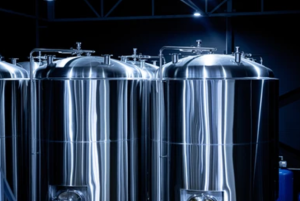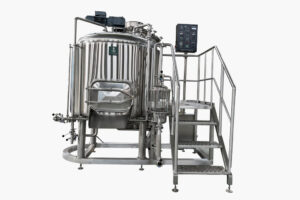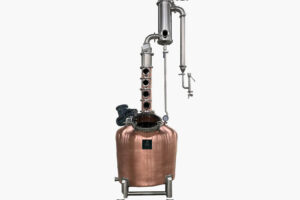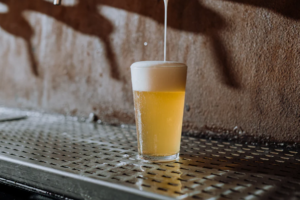COPYRIGHT © 2022 NingBo COFF Machinery Co., ltd. ALL RIGHTS RESERVED
Menu
Categories
So, you’re curious about setting up your own professional distilling equipment? You’re not alone! The craft distilling industry is booming, with sales reaching a whopping $3.7 billion in 2017. This growth reflects a rising interest in crafting unique spirits at home. Setting up your kit involves understanding the essential components and ensuring everything is in place for a smooth distillation process. Whether you’re a beginner or an experienced distiller, having the right equipment is key to creating high-quality spirits. Ready to dive in and start your distilling journey?
Understanding Your Alcohol Distillery Kit
When you first open your alcohol distillery kit, you might feel a mix of excitement and curiosity. This kit holds the key to crafting your own spirits, but understanding its components is crucial. Let’s break down what you’ll find inside and how to choose the right kit for your needs.
Components Overview
Your distillery kit comes packed with essential tools. Each piece plays a vital role in the distillation process. Here’s a quick rundown:
- Fermentation Vessel: This is where the magic begins. You’ll ferment your mash here, which is the first step in creating alcohol.
- Distillation Column: This tall structure helps separate alcohol from the mash. It’s crucial for purity.
- Condenser: This cools down the vapor, turning it back into liquid form.
- Collection Container: This is where your finished product will end up.
Some kits, like the Complete 40 Gallon Wide Body Distiller’s Kit, offer additional features. You might find a thermometer for temperature control, a hydrometer for measuring alcohol content, and even a mash transfer pump to make the process smoother. These extras can enhance your distilling experience.
Choosing the Right Kit for Your Needs
Selecting the right alcohol distillery kit depends on your goals and experience level. Are you a beginner eager to learn, or an experienced distiller looking to refine your craft? Here are some tips to guide your choice:
Size Matters: Consider how much spirit you want to produce. A larger kit, like the 40-gallon option, suits those who plan to distill in larger batches.
Features and Accessories: Look for kits with additional tools that match your skill level. Beginners might appreciate a kit with a detailed manual and basic accessories. Experienced distillers might seek advanced features like a voltage controller or a built-in proofing parrot.
Material Quality: High-quality materials, such as stainless steel or copper, ensure durability and better results. Copper, for instance, helps remove sulfur compounds, enhancing the flavor of your spirits.
Budget Considerations: Kits vary in price. Determine your budget and find a kit that offers the best value for your investment.
By understanding these components and considerations, you’ll be well on your way to choosing a kit that fits your needs perfectly. Whether you’re crafting whiskey, brandy, or another spirit, the right kit will set you up for success.
Gathering Your Equipment
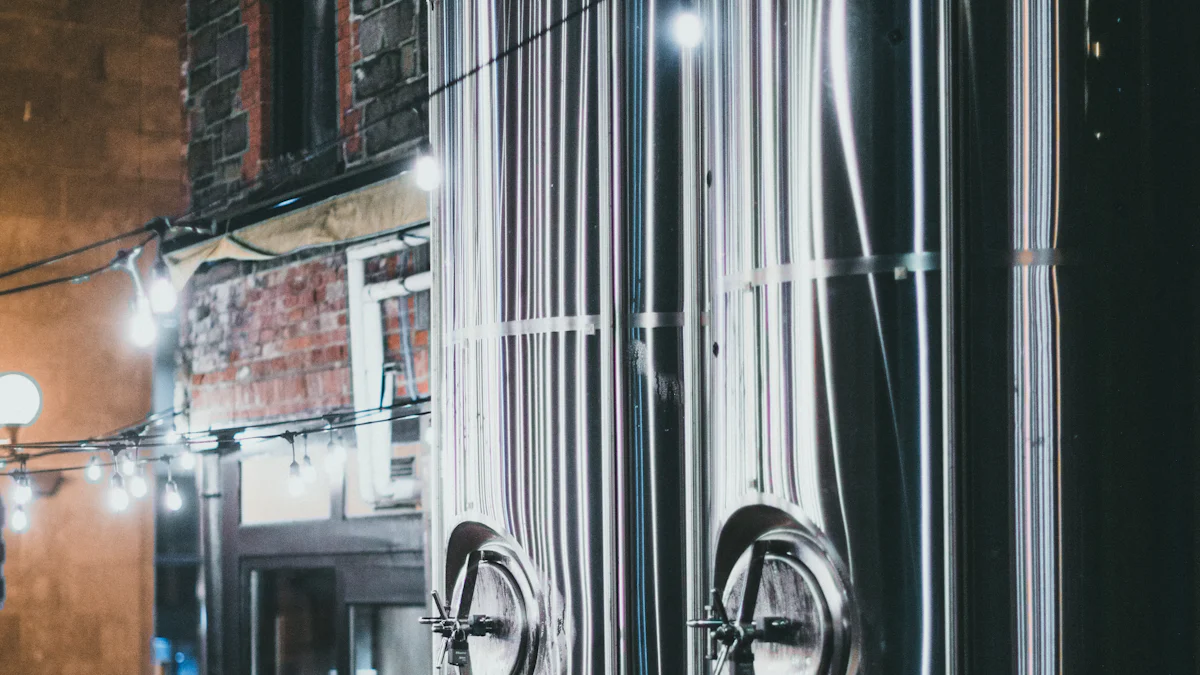
Before you start distilling, you need to gather the right equipment. This section will guide you through the essential components and optional accessories that can enhance your distillation process.
Essential Components
To set up your distillery kit, you’ll need a few key pieces of equipment. Each plays a crucial role in the distillation process:
Fermentation Vessel
The Fermentation Vessel is where your journey begins. You’ll use it to ferment your mash, which is the first step in creating alcohol. Choose a vessel made from high-quality materials like stainless steel or copper for durability and better results.
Distillation Column
Next, you’ll need a Distillation Column. This tall structure helps separate alcohol from the mash, ensuring purity. Look for columns that integrate seamlessly with your other equipment for a smooth distillation process.
Condenser
The Condenser cools down the vapor, turning it back into liquid form. It’s an essential part of your setup, so make sure it’s crafted with precision. Our condensers are made from premium materials, ensuring efficient cooling and high-quality output.
Collection Container
Finally, you’ll need a Collection Container. This is where your finished product will end up. Ensure it’s secure and easy to clean, as this will make your distillation process more efficient.
Optional Accessories
While the essential components are necessary, optional accessories can enhance your distillation experience. Consider adding these tools to your setup:
Thermometer
A Thermometer helps you monitor the temperature during distillation. Keeping an eye on the temperature ensures that your spirits are distilled at the right conditions, leading to better quality.
Hydrometer
The Hydrometer measures the alcohol content of your spirits. It’s a handy tool for ensuring that your final product meets your desired specifications.
pH Meter
Lastly, a pH Meter can be useful for checking the acidity of your mash. Maintaining the right pH level is crucial for fermentation, and this tool helps you keep everything in balance.
By gathering these essential components and considering optional accessories, you’ll be well-equipped to start your distillation journey. Each piece of equipment plays a vital role in crafting high-quality spirits, so choose wisely and enjoy the process!
Safety Precautions
When setting up your alcohol distillery kit, safety should be your top priority. Ensuring both personal and equipment safety will help you enjoy a smooth and worry-free distillation process. Let’s dive into the essential safety measures you need to consider.
Personal Safety
Your safety is paramount when working with distillation equipment. Here are some key precautions to keep in mind:
Protective Gear
Always wear protective gear. This includes safety goggles, gloves, and an apron. These items protect you from potential spills and splashes. Remember, distillation involves high temperatures and potentially hazardous materials. By wearing the right gear, you minimize the risk of injury.
Ventilation
Ensure proper ventilation in your workspace. Distillation produces vapors that can be harmful if inhaled. Set up your kit in a well-ventilated area, preferably near a window or exhaust fan. This helps disperse any fumes and keeps the air fresh. Good ventilation is crucial for maintaining a safe environment.
Equipment Safety
Taking care of your equipment is just as important as personal safety. Proper assembly and maintenance ensure your distillation process runs smoothly and safely.
Proper Assembly
Assemble your equipment correctly. Follow the manufacturer’s instructions carefully. Each component must fit securely to prevent leaks and malfunctions. Double-check all connections before starting the distillation process. A well-assembled kit reduces the risk of accidents and ensures efficient operation.
Regular Maintenance
Regular maintenance keeps your equipment in top condition. Clean all components thoroughly after each use. Inspect for any signs of wear or damage. Replace any faulty parts immediately. By maintaining your equipment, you extend its lifespan and ensure it operates safely and effectively.
The Brew Mechanic, an expert in distilling, emphasizes the importance of understanding the distillation process and the equipment used. He states, “Proper setup and maintenance of your distillation apparatus are critical to ensure successful distillation.”
By following these safety precautions, you create a safe and efficient distillation environment. Prioritize your safety and the integrity of your equipment to enjoy a successful distilling experience.
Step-by-Step Setup Guide
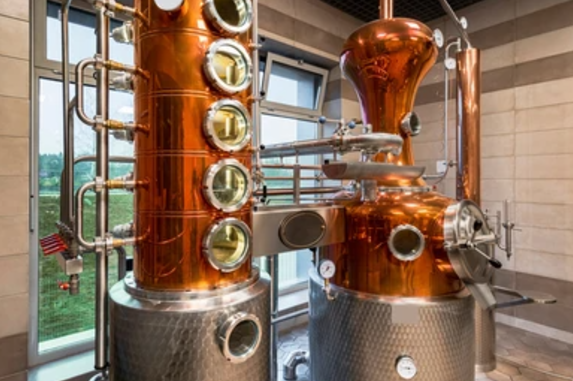
Setting up your alcohol distillery kit might seem daunting, but breaking it down into manageable steps makes it easier. Let’s walk through the process together, ensuring you have everything in place for a successful distillation.
Assembling the Fermentation Vessel
Cleaning and Sanitizing
Before you start, make sure your fermentation vessel is clean and sanitized. This step is crucial to prevent any unwanted bacteria from affecting your mash. Use a food-grade sanitizer and thoroughly rinse the vessel. A clean start ensures a smooth fermentation process.
Adding Ingredients
Once your vessel is ready, it’s time to add your ingredients. Pour in your mash, which could be a mix of grains, water, and yeast. Follow your recipe closely to ensure the right balance. Stir the mixture well to combine all the ingredients evenly. This step sets the foundation for your alcohol distillery kit to work its magic.
Setting Up the Distillation Column
Attaching to the Fermentation Vessel
Now, let’s move on to the distillation column. Attach it securely to the fermentation vessel. Make sure all connections are tight to prevent any leaks. This column will help separate the alcohol from the mash, so proper attachment is key.
Securing the Column
Once attached, secure the column in place. Check that it’s stable and won’t tip over during the distillation process. A stable setup ensures that your alcohol distillery kit functions efficiently and safely.
Installing the Condenser
Connecting to the Column
Next, you’ll need to install the condenser. Connect it to the top of the distillation column. This connection is vital as the condenser will cool the vapor back into liquid form. Ensure the connection is tight to avoid any vapor loss.
Ensuring Proper Cooling
Finally, make sure your condenser has a proper cooling system in place. You might use water or another cooling agent. Check that the cooling system is functioning correctly. Proper cooling is essential for condensing the vapor efficiently, resulting in a high-quality spirit.
By following these steps, you set up your alcohol distillery kit for success. Each component plays a crucial role in the distillation process, so take your time to ensure everything is in place. Enjoy the journey of crafting your own spirits!
Preparing the Collection Container
Getting your collection container ready is a crucial step in the distillation process. This is where your finished spirit will be collected, so you want to ensure everything is set up correctly. Let’s walk through the steps to position and secure your container for optimal results.
Positioning for Collection
First, find the right spot for your collection container. Place it directly under the condenser’s output spout. This positioning ensures that the distilled liquid flows smoothly into the container without any spills. Make sure the surface is stable and level. A wobbly setup can lead to accidents or loss of your precious spirit. If your setup allows, use a stand or holder to keep the container in place. This extra support can prevent any accidental tipping during the distillation process.
Sealing and Securing
Once positioned, focus on sealing and securing the container. A tight seal prevents any contaminants from entering your finished product. Use a lid or stopper that fits snugly. If your container has a spout or opening, ensure it’s closed properly when not in use. This step is vital for maintaining the quality and purity of your spirit. Additionally, check that the container is secure and won’t move during the distillation. You might use clamps or weights to hold it steady. A secure setup minimizes the risk of spills and ensures a smooth collection process.
By carefully preparing your collection container, you set the stage for a successful distillation with your alcohol distillery kit. Each step, from positioning to sealing, plays a role in ensuring the quality of your final product. Take your time with this setup, and you’ll enjoy the fruits of your labor with confidence.
Testing and Calibration
Testing and calibrating your equipment ensures your distillation process runs smoothly. This step is crucial for achieving high-quality spirits. Let’s dive into the details of testing your equipment and calibrating your instruments.
Testing Equipment
Before you start distilling, you need to test your equipment. This ensures everything is functioning correctly and safely.
Leak Tests
First, perform leak tests. Check all connections and seals in your setup. Look for any signs of leakage. Use a flashlight to inspect hard-to-see areas. If you find a leak, tighten the connections or replace faulty parts. A leak-free setup prevents loss of vapor and ensures safety.
Temperature Checks
Next, conduct temperature checks. Turn on your equipment and monitor the temperature at various points. Use a reliable thermometer for accurate readings. Ensure the temperature remains stable during operation. Fluctuations can affect the quality of your spirits. Consistent temperature control is key to successful distillation.
Calibrating Instruments
Calibrating your instruments guarantees accurate measurements. This step is vital for producing spirits that meet your desired specifications.
Thermometer Calibration
Start with thermometer calibration. Fill a container with ice water and place your thermometer in it. The reading should be 32°F (0°C). If not, adjust the thermometer according to the manufacturer’s instructions. Accurate temperature readings help maintain optimal distillation conditions.
Hydrometer Calibration
Now, calibrate your hydrometer. Fill a test jar with distilled water at 60°F (15.5°C). Place the hydrometer in the jar. It should read 1.000. If the reading is off, note the difference and adjust your future measurements accordingly. A calibrated hydrometer ensures precise alcohol content readings.
By testing and calibrating your equipment, you set the stage for a successful distillation process. Each step plays a crucial role in crafting high-quality spirits. Take your time with these tasks, and you’ll enjoy the rewards of your efforts.
Troubleshooting Common Issues
Even with the best setup, you might encounter some hiccups during your distillation process. Don’t worry! Let’s tackle these common issues together and find solutions that work for you.
Equipment Leaks
Leaks can be a pesky problem, but identifying and fixing them is crucial for a smooth operation.
Identifying Leaks
First, you need to spot the leaks. Look for any signs of moisture or vapor escaping from your equipment. Use a flashlight to inspect all connections and seals. Pay close attention to joints and fittings, as these are common leak points. If you notice any condensation or hear a hissing sound, you likely have a leak.
Fixing Leaks
Once you’ve identified the leak, it’s time to fix it. Tighten any loose connections with a wrench. If the leak persists, consider replacing faulty gaskets or seals. Use Teflon tape on threaded connections to ensure a tight seal. Regular maintenance and inspection can prevent future leaks and keep your distillation process running smoothly.
Temperature Fluctuations
Temperature control is vital for successful distillation. Let’s explore the causes of fluctuations and how to address them.
Causes and Solutions
Several factors can cause temperature fluctuations. Inconsistent heat sources, faulty thermometers, or improper insulation might be the culprits. To solve this, ensure your heat source provides steady and even heat. Check your thermometer for accuracy and recalibrate if necessary. Insulate your equipment to maintain a consistent temperature. By addressing these issues, you can achieve stable temperatures and improve your distillation results.
Poor Alcohol Yield
If you’re not getting the alcohol yield you expected, let’s identify common mistakes and optimize your process.
Common Mistakes
Several mistakes can lead to poor alcohol yield. Using incorrect mash ratios, not fermenting long enough, or distilling at the wrong temperature are common errors. Ensure you follow your recipe closely and allow sufficient fermentation time. Monitor your distillation temperature to ensure it’s within the optimal range for your spirit.
Optimization Tips
To optimize your yield, consider these tips. Use high-quality ingredients and maintain a clean setup. Regularly test and calibrate your equipment for accuracy. Adjust your mash recipe based on previous results to improve efficiency. By refining your process, you can maximize your alcohol yield and enjoy better-quality spirits.
Research on Distillation Troubleshooting highlights that despite advances in design and technology, the failure rate in distillation towers is on the rise. This underscores the importance of understanding and addressing common issues to ensure successful distillation.
By troubleshooting these common issues, you can enhance your distillation experience and produce high-quality spirits. Remember, practice makes perfect, so keep refining your process and enjoy the journey!
Legal Considerations
Setting up an alcohol distillery kit at home is exciting, but you must consider the legal aspects. Understanding the regulations and obtaining the necessary permits ensures you stay on the right side of the law. Let’s explore what you need to know.
Understanding Local Regulations
Before you start distilling, research your local regulations. Each region has its own rules about home distillation. Some places allow it for personal use, while others have strict prohibitions. You need to know what’s allowed in your area.
Research Online: Start by checking government websites. They often have sections dedicated to alcohol production laws. Look for information specific to home distillation.
Contact Local Authorities: Reach out to your local alcohol control board or similar authority. They can provide detailed information about what’s legal in your area. Don’t hesitate to ask questions if you’re unsure about any regulations.
Join Online Forums: Engage with online communities of home distillers. These forums can be a valuable resource for understanding local laws. Members often share their experiences and insights.
Understanding these regulations helps you avoid legal issues. It also ensures you can enjoy your distillation hobby without worry.
Licensing and Permits
In many areas, you need a license or permit to distill alcohol, even at home. This process might seem daunting, but it’s essential for legal compliance.
Determine Requirements: Find out what licenses or permits you need. This information is usually available on government websites. Requirements vary widely, so make sure you get the right details for your location.
Gather Necessary Documents: Prepare any documents required for your application. This might include identification, proof of residence, and details about your distillation setup. Having these ready speeds up the application process.
Submit Your Application: Follow the instructions for submitting your application. This might involve filling out forms online or visiting a local office. Be thorough and accurate to avoid delays.
Pay Any Fees: Some permits come with a fee. Make sure you know the cost and how to pay it. Keep a record of your payment for future reference.
Wait for Approval: Once you’ve submitted everything, wait for approval. This can take time, so be patient. Use this period to continue learning about distillation and refining your skills.
By understanding local regulations and obtaining the necessary licenses, you ensure your distillation activities are legal. This peace of mind allows you to focus on crafting high-quality spirits and enjoying your hobby to the fullest.
FAQ
Curious about setting up your alcohol distillery kit? You’re not alone! Here are some frequently asked questions that might help you on your distillation journey.
1. Can I legally distill alcohol at home?
In the United States, federal law prohibits home distillation of spirits for personal use. However, some states have their own regulations. It’s crucial to check both federal and state laws before starting. You might find that while federal law is strict, certain states offer more leniency. Always ensure you’re compliant with local regulations to avoid legal issues.
2. What equipment do I need to start distilling?
To begin distilling, you’ll need a few essential components:
- Fermentation Vessel: Where your mash ferments.
- Distillation Column: Separates alcohol from the mash.
- Condenser: Cools vapor back into liquid.
- Collection Container: Holds your finished product.
Optional accessories like a thermometer or hydrometer can enhance your setup. These tools help monitor temperature and alcohol content, ensuring a high-quality spirit.
3. How do I ensure safety while distilling?
Safety should always be your top priority. Here are some tips:
- Wear Protective Gear: Safety goggles, gloves, and an apron protect you from spills.
- Ensure Proper Ventilation: Distillation produces vapors that can be harmful if inhaled. Set up in a well-ventilated area.
- Regular Maintenance: Clean and inspect your equipment after each use to prevent malfunctions.
4. What should I do if my equipment leaks?
Leaks can disrupt your distillation process. To fix them:
- Identify the Leak: Look for moisture or vapor escaping.
- Tighten Connections: Use a wrench to secure loose parts.
- Replace Faulty Seals: If tightening doesn’t work, consider replacing gaskets or seals.
Regular checks can prevent leaks and ensure smooth operation.
5. How can I improve my alcohol yield?
Improving your yield involves refining your process:
- Use Quality Ingredients: High-quality grains or sugars lead to better spirits.
- Monitor Fermentation: Ensure your mash ferments fully before distillation.
- Calibrate Equipment: Regularly test and adjust your instruments for accuracy.
By following these tips, you can maximize your yield and enjoy better-quality spirits.
6. Do I need a license to distill at home?
Yes, in most cases, you need a license to legally distill alcohol at home. The process involves:
- Researching Requirements: Check what licenses are needed in your area.
- Gathering Documents: Prepare necessary paperwork for your application.
- Submitting Your Application: Follow instructions carefully to avoid delays.
Obtaining a license ensures you’re compliant with the law and can enjoy your hobby without worry.
Remember: Always prioritize safety and legality when setting up your distillery kit. By understanding the rules and taking precautions, you can enjoy a rewarding distillation experience.
You’ve now got the essential steps to set up your alcohol distillery kit. By following this guide, you ensure a successful and safe distillation experience. Remember, each step plays a crucial role in crafting high-quality spirits. Prioritize safety by wearing protective gear and ensuring proper ventilation. Adhering to legal guidelines is equally important. Research local regulations and obtain necessary permits to enjoy your hobby without worry. Making the right decisions now will pave the way for logical growth in your distillation journey. Cheers to your new adventure in crafting unique spirits at home!

